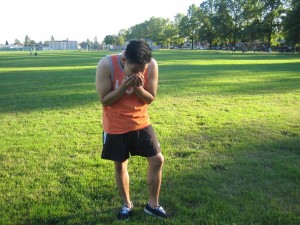Bonfires can be harmless and can be controlled, but the smoke produced can be very dangerous to the health. The smoke from bonfires contains chemicals and compounds that are dangerous to the body in high doses. Before starting a bonfire, it is important to know the possible complications that might arise from inhaling the smoke it produces.
[youtube url=”https://www.youtube.com/watch?v=2Wa9X208NRE”]Bonfires contain plenty of combustible materials. Combustible materials are ingredients that are burned to produce heat like gasoline, diesel fuel, propane, paints, lacquer thinner and wood stain. The smoke produced is composed of simple asphyxiants, chemical asphyxiants and irritant compounds.
• Simple asphyxiants
Burning utilizes oxygen thus leading to death to an individual once there is no more oxygen to breathe in.
• Chemical asphyxiants
A bonfire produces compounds that interfere with how the body utilizes oxygen. It includes carbon monoxide, hydrogen cyanide and hydrogen sulphide. These compounds interfere with the use of oxygen by the cells in the production of energy.
• Irritant compounds
The burning process can result to the formation of chemicals that can damage the skin and mucous membranes. These chemicals disrupt the normal lining of the respiratory system causing swelling, airway collapse and even pain.
Signs and symptoms
There are various signs and symptoms of smoke inhalation.

• Cough – when the mucous membrane of the respiratory system becomes irritated, excess mucus is secreted. Once there is an increase in the production of mucus, it can lead to reflex coughing. The color of the mucus may be clear or black since it depends on the degree of the burned particles that were deposited in the lungs and trachea.
• Shortness of breath – this is caused by a direct injury to the respiratory tract that leads to the decrease in the oxygen supply in the blood due to the chemicals present in the smoke.
• Hoarseness – a sign that indicates that fluids have collected in the upper airway that is causing the blockage. There is also spasm of the vocal cords, swelling and constriction of the upper airways due to irritant chemicals.
• Red eyes – the eyes become red due to the smoke
• Changes in skin color – the color of the skin ranges from pale to bluish to cherry red.
• Presence of soot in the nose – soot within the nostrils or throat indicates that smoke has been inhaled.
• Headache – those who have inhaled carbon monoxide may experience headache, nausea, vomiting and confusion. These are the indications of carbon monoxide poisoning.
• Alterations in the mental status – chemical components and diminished levels of oxygen can result to the changes in the mental state of an individual such as confusion, seizures, fainting and even coma are complications caused by inhalation of smoke produced by bonfires.
First aid and treatment for smoke inhalation
The initial task to perform is to removing the person from the source of the smoke. If the person is unconscious, perform CPR until help arrives. The medical treatment given depends on the nature of the damage sustained.